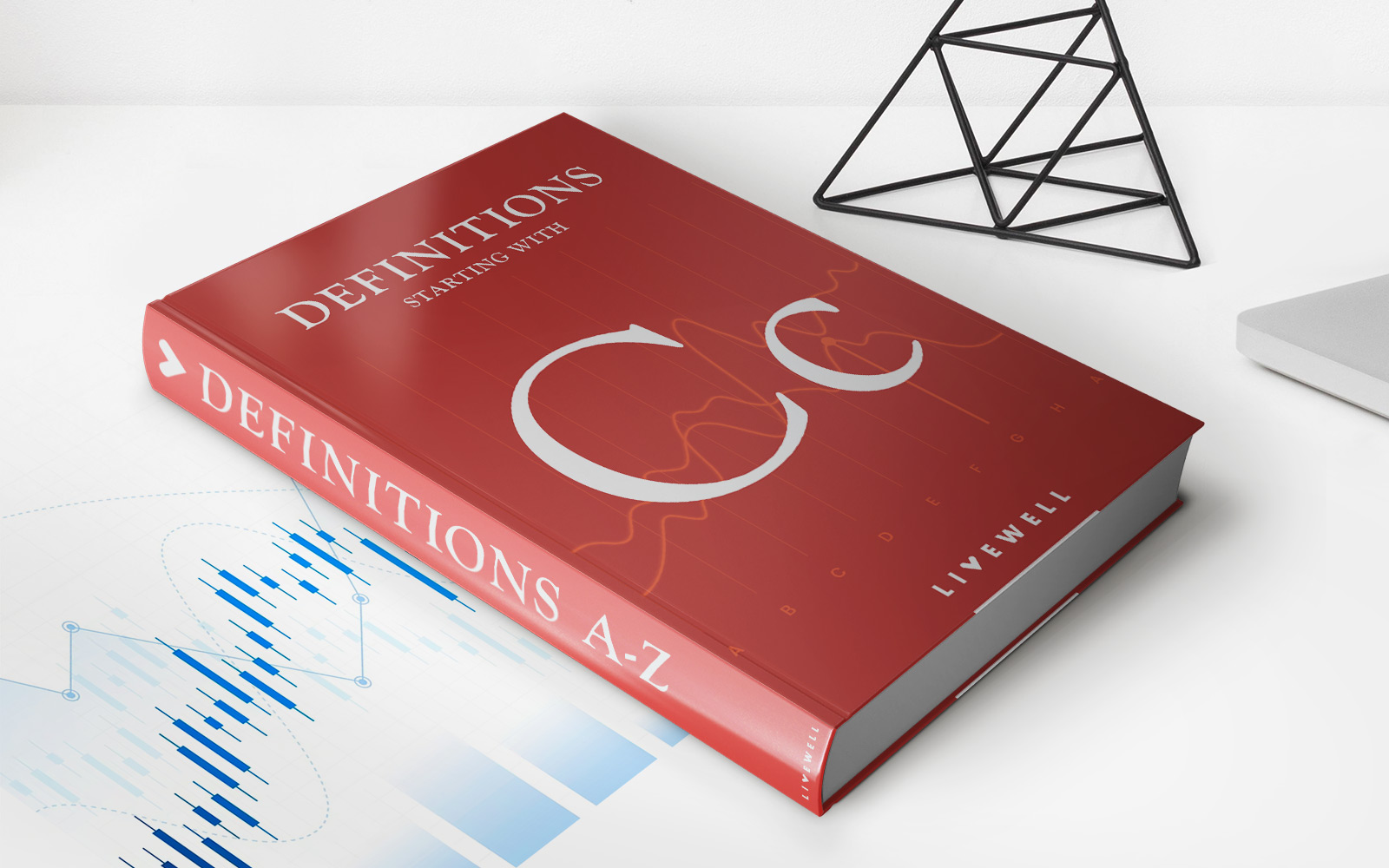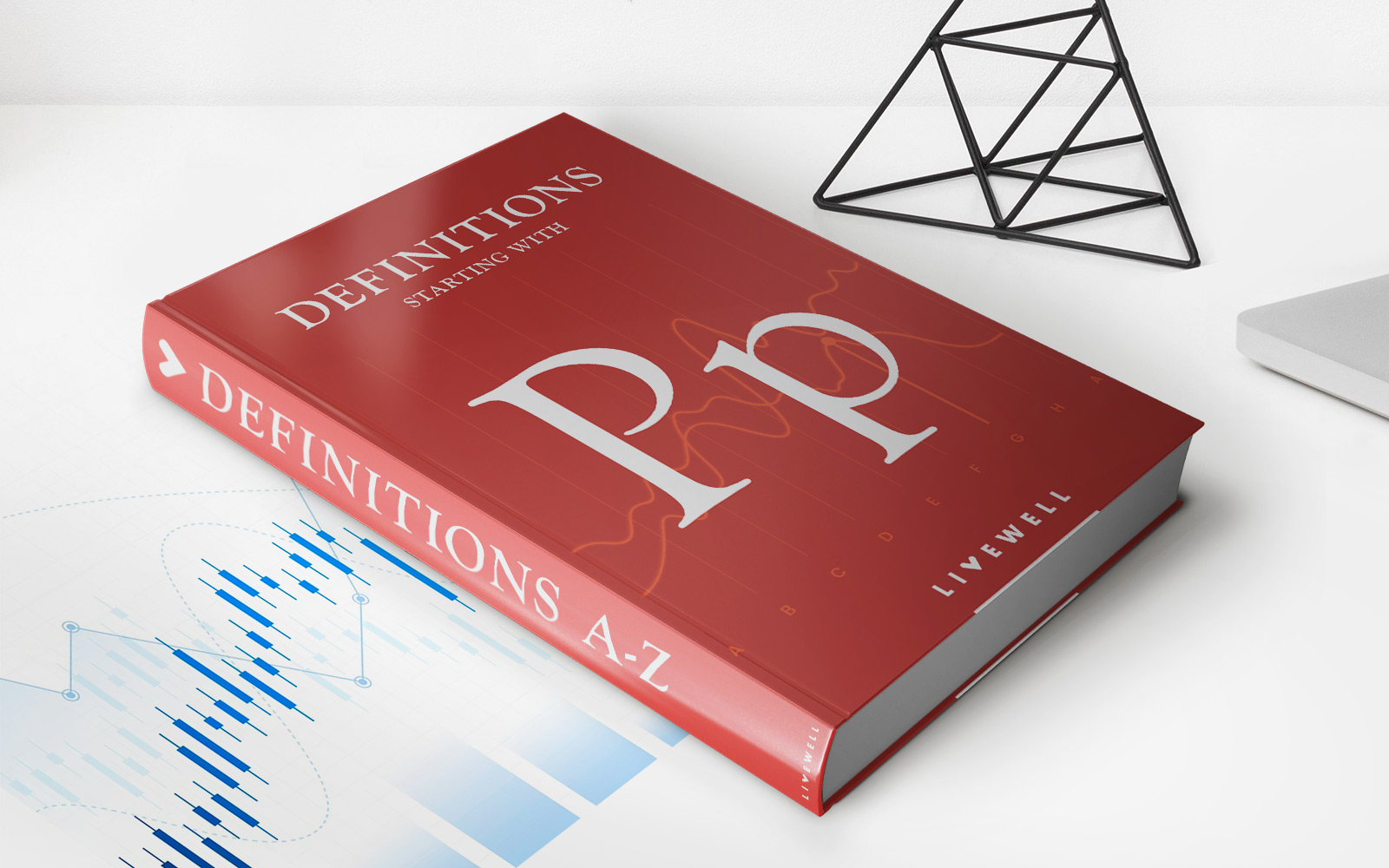Home>Finance>What Is The Difference Between Life Insurance And Life Assurance?


Finance
What Is The Difference Between Life Insurance And Life Assurance?
Published: October 16, 2023
Discover the key distinctions between life insurance and life assurance. Understand how each option can provide financial security for you and your loved ones.
(Many of the links in this article redirect to a specific reviewed product. Your purchase of these products through affiliate links helps to generate commission for LiveWell, at no extra cost. Learn more)
Table of Contents
- Introduction
- Definition of Life Insurance
- Definition of Life Assurance
- The Purpose of Life Insurance
- The Purpose of Life Assurance
- Coverage and Benefits of Life Insurance
- Coverage and Benefits of Life Assurance
- Premiums and Payments for Life Insurance
- Premiums and Payments for Life Assurance
- Duration of Life Insurance
- Duration of Life Assurance
- How to Choose Between Life Insurance and Life Assurance
- Conclusion
Introduction
When it comes to protecting your loved ones and securing their financial future, there are two common options that often come to mind: life insurance and life assurance. However, many people may not be aware of the differences between the two and how they apply to their specific needs. In this article, we will explore the disparities between life insurance and life assurance, highlighting their definitions, purposes, coverage and benefits, premiums and payments, duration, and how to choose the right option for you.
Life insurance and life assurance are financial products designed to provide a payout or financial protection to your beneficiaries in the event of your death. Both options offer peace of mind and ensure that your loved ones are taken care of when you are no longer able to support them.
However, it’s important to note that there are significant differences between the two, which can affect the level of coverage, the duration of the policy, and the premiums you will need to pay. Understanding these differences will help you make an informed decision and select the most suitable option for your individual circumstances.
In the following sections, we will break down the definition, purpose, coverage, benefits, premiums and payments, duration, and selection criteria of both life insurance and life assurance. By the end of this article, you will have a clear understanding of their distinctions and be better equipped to make an informed choice.
Definition of Life Insurance
Life insurance is a contract between an individual, known as the policyholder, and an insurance company. In this agreement, the policyholder pays regular premiums to the insurance company in exchange for a sum of money, known as the death benefit, which is paid out to the designated beneficiaries upon the policyholder’s death.
The primary purpose of life insurance is to provide financial protection and support for the policyholder’s dependents, such as their spouse, children, or other loved ones, in the event of the policyholder’s untimely demise. The death benefit can be used to cover various expenses, including funeral costs, outstanding debts, mortgage payments, and daily living expenses.
Life insurance policies come in different types, including term life insurance and permanent life insurance. Term life insurance provides coverage for a specific period, typically ranging from 10 to 30 years. If the policyholder dies within the term of the policy, the beneficiaries receive the death benefit. However, if the policyholder survives the term, the coverage ends, and no payout is made.
On the other hand, permanent life insurance, also known as whole life insurance or universal life insurance, provides coverage for the policyholder’s entire lifetime as long as the premiums are paid. This type of policy also includes a cash value component that accumulates over time and can be accessed by the policyholder during their lifetime.
In summary, life insurance is a contractual agreement in which the policyholder pays regular premiums in exchange for a death benefit that is paid out to the beneficiaries upon the policyholder’s death. It serves as a financial safety net for loved ones, ensuring that they are protected and financially cared for in the event of the policyholder’s passing.
Definition of Life Assurance
Life assurance, also referred to as life insurance in some regions, is a form of financial protection that provides coverage for the policyholder throughout their entire life. Unlike life insurance, which focuses on providing a death benefit to beneficiaries upon the policyholder’s demise, life assurance combines both protection and investment elements.
Life assurance policies typically involve the policyholder paying regular premiums to the insurance company. These premiums are then invested by the insurance company into various financial instruments, such as stocks, bonds, or mutual funds. Over time, the investments grow in value and contribute to the cash value or investment fund associated with the life assurance policy.
When the policyholder passes away, the beneficiaries receive the death benefit, which includes the sum assured plus any accumulated cash value. The death benefit is usually tax-free, providing a significant financial payout to the policyholder’s loved ones.
Unlike traditional life insurance policies, which have a fixed term or expiry date, life assurance policies have no fixed term. Policyholders are covered for their entire life as long as the premiums are paid. This means that the death benefit is guaranteed to be paid out whenever the policyholder passes away, regardless of the age at the time of death.
Life assurance policies also offer the flexibility to borrow against the accumulated cash value or surrender the policy for a portion of its value if the policyholder needs access to funds during their lifetime. These features make life assurance a versatile financial tool that can provide both protection and additional financial benefits.
In summary, life assurance is a comprehensive form of financial protection that combines life insurance coverage with investment opportunities. With no fixed term, it provides lifelong coverage and guarantees a death benefit payout to beneficiaries upon the policyholder’s passing. The cash value component and investment options make life assurance a flexible solution that offers both protection and potential financial growth.
The Purpose of Life Insurance
The primary purpose of life insurance is to provide financial protection and support for the policyholder’s loved ones in the event of their death. It aims to alleviate the financial burden that may arise from the loss of the policyholder’s income and to ensure that the beneficiaries are protected and taken care of.
Here are some of the key purposes of life insurance:
- Income Replacement: Life insurance acts as a safety net to replace the income of the policyholder. It ensures that the beneficiaries can maintain their standard of living, pay bills, and cover daily expenses even after the policyholder’s passing.
- Debt Repayment: Life insurance can be used to pay off outstanding debts, such as mortgages, loans, and credit card balances. This prevents the beneficiaries from inheriting these financial obligations and provides them with a clean slate.
- Educational Expenses: Life insurance can help fund the educational expenses of the policyholder’s children or dependents. It can cover school fees, college tuition, and other educational needs, ensuring that the beneficiaries have access to quality education.
- Funeral and Final Expenses: The death benefit from a life insurance policy can be used to cover funeral costs, burial expenses, and other end-of-life arrangements. It relieves the financial burden on the policyholder’s family during an already challenging time.
- Charitable Contributions: Some people choose to name charitable organizations as their beneficiaries. Life insurance proceeds can provide support to these organizations, allowing individuals to leave a lasting impact and support causes they care about.
Life insurance gives individuals peace of mind knowing that their loved ones will be financially protected and can maintain their quality of life even in their absence. It provides a sense of security and ensures that the policyholder’s legacy lives on.
Choosing the right life insurance policy depends on factors such as age, health, financial goals, and the needs of the beneficiaries. It is essential to assess these factors and work with an insurance professional to select a policy that aligns with your specific circumstances and objectives.
The Purpose of Life Assurance
The purpose of life assurance goes beyond providing financial protection in the event of the policyholder’s death. Life assurance combines insurance coverage with investment opportunities, offering policyholders additional benefits and financial growth potential. The main purposes of life assurance are:
- Long-Term Financial Planning: Life assurance serves as a tool for long-term financial planning and wealth creation. It provides a means to accumulate savings and build up a cash value over time, which can be used for various financial needs in the future.
- Investment Growth: Life assurance policies typically invest a portion of the premiums into various financial instruments, such as stocks, bonds, or mutual funds. These investments have the potential to grow in value, allowing the policyholder to benefit from the returns and potentially achieve higher yields compared to traditional savings accounts.
- Tax Efficiency: The growth of the investment component in life assurance policies is usually tax-deferred, meaning that policyholders do not have to pay taxes on the gains until they withdraw or surrender the policy. This can result in significant tax advantages and help policyholders maximize their investment returns over time.
- Flexibility and Access to Funds: Life assurance policies often allow policyholders to borrow against the cash value or surrender the policy for a portion of its value. This provides flexibility and access to funds that can be used for various purposes, such as financing education, starting a business, or covering unexpected expenses.
- Generational Wealth Transfer: Life assurance can be utilized as a wealth transfer strategy, allowing policyholders to pass on a substantial amount of wealth to future generations. The accumulated cash value and death benefit can be used to create a lasting financial legacy for beneficiaries.
Overall, life assurance is designed to provide both insurance coverage and investment opportunities, allowing policyholders to secure their financial future while potentially growing their wealth. The ability to accumulate savings, benefit from investment returns, and access funds when needed makes life assurance a versatile financial tool for individuals who seek long-term financial planning and wealth accumulation.
However, it is important to note that life assurance policies may have higher premiums compared to traditional life insurance due to the added investment component and potential benefits. It is crucial for individuals to carefully assess their financial goals, risk tolerance, and long-term objectives before deciding to invest in a life assurance policy.
Coverage and Benefits of Life Insurance
Life insurance provides coverage and a range of benefits to policyholders and their beneficiaries. Understanding the coverage and benefits offered by life insurance policies is crucial in selecting the right policy for your needs. Here are some key aspects to consider:
- Death Benefit: The primary benefit of life insurance is the death benefit, which is the sum of money paid out to the beneficiaries upon the policyholder’s death. This benefit is typically tax-free and provides financial support to cover various expenses, such as funeral costs, outstanding debts, and living expenses.
- Choice of Coverage Amount: Life insurance policies allow individuals to select the coverage amount based on their specific needs. The amount chosen should be sufficient to meet the financial requirements of the beneficiaries, taking into account factors such as outstanding debts, future expenses, and income replacement needs.
- Flexible Policy Options: Life insurance policies offer flexibility, allowing policyholders to select the policy duration, payment frequency, and coverage type that best suits their needs. They can choose between term life insurance for temporary coverage or permanent life insurance for lifelong protection.
- Additional Riders: Riders are optional add-ons to life insurance policies that provide additional coverage or benefits. Some common riders include accidental death benefit riders, disability income riders, and critical illness riders. These riders provide extra protection in specific situations and can be tailored to individual needs.
- Convertibility: Term life insurance policies often come with a convertibility feature that allows policyholders to convert their term policy into a permanent life insurance policy without the need for a medical exam. This provides an opportunity to extend coverage beyond the initial term if the policyholder’s needs change.
The coverage and benefits provided by life insurance policies are essential for ensuring financial security for your loved ones in the event of your passing. It is crucial to carefully assess your financial obligations, future needs, and the well-being of your beneficiaries when choosing a life insurance policy.
Working with an experienced insurance professional can help you navigate the various coverage options, determine the appropriate coverage amount, and select any additional riders that might be beneficial for your specific circumstances. Remember, life insurance is a long-term commitment, so it is essential to choose a policy that aligns with your financial goals and provides adequate protection for your loved ones.
Coverage and Benefits of Life Assurance
Life assurance offers coverage and a range of benefits that go beyond traditional life insurance policies. Understanding the coverage and benefits provided by life assurance can help individuals make informed decisions about their financial planning. Here are some key aspects to consider:
- Lifetime Coverage: Life assurance policies provide coverage for the entire lifetime of the policyholder, as long as the premiums are paid. This means that the beneficiaries are guaranteed to receive the death benefit whenever the policyholder passes away, regardless of age.
- Death Benefit: Similar to life insurance, life assurance also offers a death benefit that is paid out to the beneficiaries upon the policyholder’s death. The death benefit includes the sum assured plus any accumulated cash value, providing substantial financial support to the beneficiaries.
- Investment Component: Life assurance policies typically include an investment component, allowing policyholders to accumulate savings and participate in potential investment growth. The premiums paid are invested by the insurance company, and policyholders may benefit from the returns on these investments over time.
- Cash Value: The investment component of life assurance policies results in the accumulation of a cash value over time. This cash value can be accessed by the policyholder during their lifetime and used for various financial needs, such as education expenses, supplementing retirement income, or emergencies.
- Tax Advantages: The growth of the investment component in life assurance policies is usually tax-deferred. This means that policyholders do not have to pay taxes on the gains until they withdraw or surrender the policy. This tax efficiency can provide significant advantages for long-term financial planning.
- Flexibility: Life assurance policies offer flexibility in terms of premium payments and the ability to adjust coverage amounts based on changing financial circumstances. Policyholders may have the option to increase or decrease their coverage, add or remove riders, or make adjustments to their premium payments.
The coverage and benefits provided by life assurance policies make them a comprehensive financial planning tool. The combination of lifelong coverage, potential investment growth, cash value accumulation, and flexibility make life assurance an attractive option for individuals looking to secure their financial future and leave a lasting legacy for their beneficiaries.
It is crucial to carefully assess your financial goals, risk tolerance, and long-term objectives when considering life assurance. Working with a knowledgeable financial advisor or insurance professional can help you understand the intricacies of life assurance policies and select the most suitable option for your individual needs.
Premiums and Payments for Life Insurance
When it comes to life insurance, premiums and payment structures play a crucial role in the affordability and sustainability of the policy. Understanding how premiums are calculated and the available payment options is essential when selecting a life insurance policy. Here are some important aspects to consider:
- Premium Calculation: Life insurance premiums are determined based on several factors, including the policyholder’s age, gender, health condition, occupation, and lifestyle. Younger and healthier individuals typically pay lower premiums compared to older individuals or those with pre-existing medical conditions.
- Term Life Insurance: Term life insurance policies offer coverage for a specific period, such as 10, 20, or 30 years. Premiums for term life insurance policies are typically lower compared to permanent life insurance because they provide coverage for a limited time. However, these premiums may increase when the policy is renewed or converted to a different type of policy.
- Permanent Life Insurance: Permanent life insurance policies, such as whole life or universal life, provide coverage for the policyholder’s entire lifetime. Premiums for permanent life insurance policies are higher compared to term life insurance due to the lifelong coverage and the added investment component.
- Payment Frequency: Policyholders have the flexibility to choose how often they want to make premium payments. Common options include monthly, quarterly, semi-annual, or annual payments. Paying premiums annually often results in lower overall costs compared to more frequent payment options.
- Guaranteed Premiums: Some life insurance policies offer guaranteed premiums, which means the premium amount remains fixed throughout the policy duration. This gives policyholders peace of mind knowing that their premiums will not increase over time.
- Flexible Premiums: Certain types of permanent life insurance, such as universal life, allow policyholders to adjust their premium payments within certain limits. They can increase or decrease their premium amount to align with their financial circumstances and goals, as long as the policy has enough cash value to cover the costs.
It is important to evaluate your financial capabilities, budget, and long-term affordability when selecting a life insurance policy. Consider your current and future income, expenses, and financial goals to determine the premium amount that works best for you.
Working with a knowledgeable insurance professional can help you navigate the different premium options and payment structures. They can assist you in finding a policy that balances your coverage needs with your financial capacity, ensuring that your premiums are affordable and sustainable in the long run.
Premiums and Payments for Life Assurance
Premiums and payment structures are important considerations when it comes to life assurance policies. Understanding how premiums are calculated and the available payment options is crucial in selecting a life assurance policy that fits your financial goals and circumstances. Here are some key aspects to consider regarding premiums and payments:
- Premium Calculation: Life assurance premiums are determined based on various factors, including the policyholder’s age, gender, health condition, lifestyle, and the desired coverage amount. These factors help the insurance company assess the level of risk and determine the appropriate premium to ensure the policy’s financial viability.
- Payment Frequency: Policyholders have the flexibility to choose the frequency of their premium payments, with options typically including monthly, quarterly, semi-annual, or annual payments. It is important to select a payment frequency that aligns with your budget and financial preferences.
- Investment Component: Life assurance policies often have an investment component, where a portion of the premiums paid is invested by the insurance company on behalf of the policyholder. The returns from these investments can help build up the policy’s cash value and potentially offset future premiums.
- Flexible Premiums: Some life assurance policies offer flexible premium payment options, allowing policyholders to adjust the amount they pay within certain limits. This flexibility caters to the policyholder’s changing financial circumstances and enables them to maintain the policy while managing their budget effectively.
- Guaranteed Premiums: Certain life assurance policies offer guaranteed premiums, meaning the premium amount remains fixed for the duration of the policy. This provides policyholders with financial certainty, as they know the premium amount will not increase regardless of changes in their health or age.
- Rider Costs: Additional riders, such as critical illness or disability insurance, enhance the coverage provided by life assurance policies. However, these riders typically require an additional cost in the form of increased premiums. It is important to carefully consider the costs and benefits of any riders when evaluating life assurance options.
When considering life assurance, it is essential to assess your financial situation, including your income, expenses, and long-term budget. This evaluation will help ensure that the premium payments are affordable and sustainable for the duration of the policy.
Working with an experienced insurance advisor can be valuable in navigating the premium options and understanding the long-term financial implications. They can guide you in selecting a life assurance policy that fits your needs and helps you achieve your financial goals, while also ensuring that the premium payments are comfortably within your means.
Duration of Life Insurance
Life insurance policies have a specific duration, which determines how long the coverage will be in effect. The duration of life insurance varies depending on the type of policy chosen. Here are some key points to consider about the duration of life insurance:
- Term Life Insurance: Term life insurance policies have a fixed duration, typically ranging from 10 to 30 years, though shorter or longer terms may be available. During this period, the policyholder pays regular premiums, and if they pass away within the term, the death benefit is paid out to the beneficiaries. However, if the policyholder outlives the term, the coverage ends, and no payout is made.
- Permanent Life Insurance: Permanent life insurance, such as whole life or universal life insurance, is designed to provide lifelong coverage. As long as the policyholder pays the premiums, the policy remains in force, and the death benefit will be paid out to the beneficiaries upon their passing. Permanent life insurance policies do not have a specific duration and provide coverage until the policyholder’s death.
- Convertible Options: Some term life insurance policies offer the option to convert to a permanent life insurance policy without requiring a new medical examination. This can be beneficial if the policyholder’s needs change, and they prefer to have coverage that extends beyond the initial term.
- Renewability: Depending on the terms of the policy, term life insurance may offer the option to renew the coverage at the end of the term. However, the premiums for renewed policies are typically higher, as they are adjusted based on the insured’s age at the time of renewal.
It is essential to consider your specific needs when choosing the duration of your life insurance policy. Term life insurance is often preferred for individuals who require coverage for a specific period, such as to protect their family during their working years or to cover a mortgage. Permanent life insurance is suitable for those seeking lifelong coverage, wealth accumulation, and potential cash value growth.
However, keep in mind that the longer the duration of the policy, the higher the premiums may be. It’s important to evaluate your financial capacity and budget to ensure that you can comfortably afford the premiums for the desired duration of the policy.
Consulting with a licensed insurance professional can help you understand the options available and find a life insurance policy with the right duration that aligns with your financial goals and provides adequate coverage for your unique situation.
Duration of Life Assurance
Life assurance policies differ from life insurance policies in terms of their duration. While life insurance policies usually have a specific term, life assurance policies are designed to provide coverage for the entire lifetime of the policyholder. Here are some key points to understand about the duration of life assurance:
- Lifetime Coverage: Life assurance policies offer coverage for the entire duration of the policyholder’s life, as long as the premiums are paid when due. Unlike term life insurance, which provides coverage for a specific term, life assurance provides lifelong protection.
- No Expiry: Life assurance policies do not have an expiry date, ensuring that the policyholder remains covered as long as the premiums are maintained. This provides peace of mind, knowing that the beneficiaries will receive the death benefit whenever the policyholder passes away, regardless of age or health condition.
- Investment Component: Life assurance policies often include an investment component, where a portion of the premiums is invested by the insurance company. The investment growth contributes to the cash value accumulation over time, providing additional benefits to the policyholder and potentially offsetting future premium payments.
- Flexible Premium Payment: Some life assurance policies offer flexibility in premium payments. Policyholders may have the option to adjust their premium amounts or frequency within certain limits. This flexibility can help policyholders manage their financial obligations as their circumstances change throughout their lifetime.
- Access to Cash Value: Another advantage of life assurance policies is that policyholders can access the accumulated cash value during their lifetime. They can borrow against the cash value or surrender the policy for a portion of its value, providing the freedom to use the funds for various financial needs, such as education expenses, supplementing retirement income, or emergencies.
- Guaranteed Coverage: As long as the premiums are paid, life assurance policies guarantee coverage for the policyholder’s entire life. This assurance ensures that beneficiaries will receive the death benefit, providing financial protection and support when they need it most.
The lifelong coverage and investment benefits offered by life assurance make it an attractive option for individuals who want comprehensive financial protection and potential growth of their investments. It allows policyholders to plan for their long-term financial goals and ensures that their loved ones are taken care of even after they pass away.
It’s important to carefully evaluate your financial situation and long-term objectives when considering a life assurance policy. Working with a financial advisor or insurance professional with expertise in life assurance can help you understand the options available, tailor the policy to your needs, and ensure that it aligns with your financial goals and circumstances.
How to Choose Between Life Insurance and Life Assurance
Choosing between life insurance and life assurance requires a careful evaluation of your financial goals, needs, and circumstances. Both options offer valuable protection and benefits, but understanding the differences can help you make an informed decision. Here are some factors to consider when choosing between life insurance and life assurance:
- Coverage Duration: Determine whether you need coverage for a specific term or lifelong protection. If you have a temporary need, such as paying off a mortgage or protecting your family during your working years, term life insurance may suffice. However, if you are looking for lifelong coverage and potential investment benefits, life assurance might be the better option.
- Financial Goals: Consider your long-term financial goals and how each option aligns with those goals. If you want to accumulate savings, enjoy potential investment growth, and have access to funds during your lifetime, life assurance can provide these benefits. Life insurance, on the other hand, focuses mainly on providing a death benefit to your beneficiaries.
- Budget and Affordability: Evaluate your budget and assess how the premiums fit within your financial capacity. Life insurance premiums are often lower compared to life assurance because they provide coverage for a limited term. Life assurance premiums, with the added investment and cash value component, may be higher, but they offer additional long-term financial benefits.
- Risk Tolerance: Consider your risk tolerance when selecting between life insurance and life assurance. Life insurance provides straightforward coverage without the potential investment risk, while life assurance policies carry the risk and potential reward of investment returns. Evaluate your comfort level with the potential fluctuations and uncertainties associated with investments.
- Flexibility: Assess your need for flexibility in premium payments, coverage adjustments, or the ability to access funds. Life assurance policies often offer more flexibility compared to life insurance. Determine if the additional features, such as the option to adjust premiums or the ability to borrow against the cash value, are important to you.
- Professional Guidance: Seeking advice from a licensed insurance professional or financial advisor can be valuable when deciding between life insurance and life assurance. They can assess your financial situation, goals, and risk tolerance to help determine the most suitable option for your needs. They will guide you through the process, explain the nuances of each option, and help you find the right balance between coverage and affordability.
Ultimately, the decision between life insurance and life assurance depends on your specific circumstances, financial goals, and risk tolerance. It is important to conduct thorough research, assess your needs and budget, and seek professional guidance to ensure that the chosen option provides the right level of protection and aligns with your long-term financial objectives.
Conclusion
Choosing between life insurance and life assurance is an important decision that requires careful consideration of your financial goals, needs, and circumstances. While both options provide financial protection, they differ in terms of coverage duration, benefits, premiums, and flexibility. By understanding the distinctions between life insurance and life assurance, you can make an informed choice that aligns with your requirements.
If you have a temporary need for coverage or seek a more affordable option, term life insurance may be suitable. It offers coverage for a specific term and focuses on providing a death benefit to your beneficiaries. On the other hand, if you desire lifelong coverage, potential investment growth, and flexibility in premium payments and accessing funds, life assurance could be the better choice. Life assurance policies come with an investment component that accumulates cash value over time, offering additional benefits and the potential for higher returns.
When making your decision, it is essential to assess your financial goals, risk tolerance, and budget. Evaluating factors such as coverage duration, financial objectives, affordability, flexibility, and access to funds will help you choose the option that best meets your individual needs.
Working with a licensed insurance professional or financial advisor can provide valuable guidance throughout the decision-making process. They can help evaluate your specific circumstances, explain the nuances of each option, and recommend the most suitable policy based on your goals and requirements.
Remember, selecting between life insurance and life assurance is a personal decision that should align with your long-term financial plan. By considering your goals, assessing your needs and budget, and seeking professional advice, you can choose the option that provides the necessary coverage and supports your financial well-being and the future of your loved ones.














